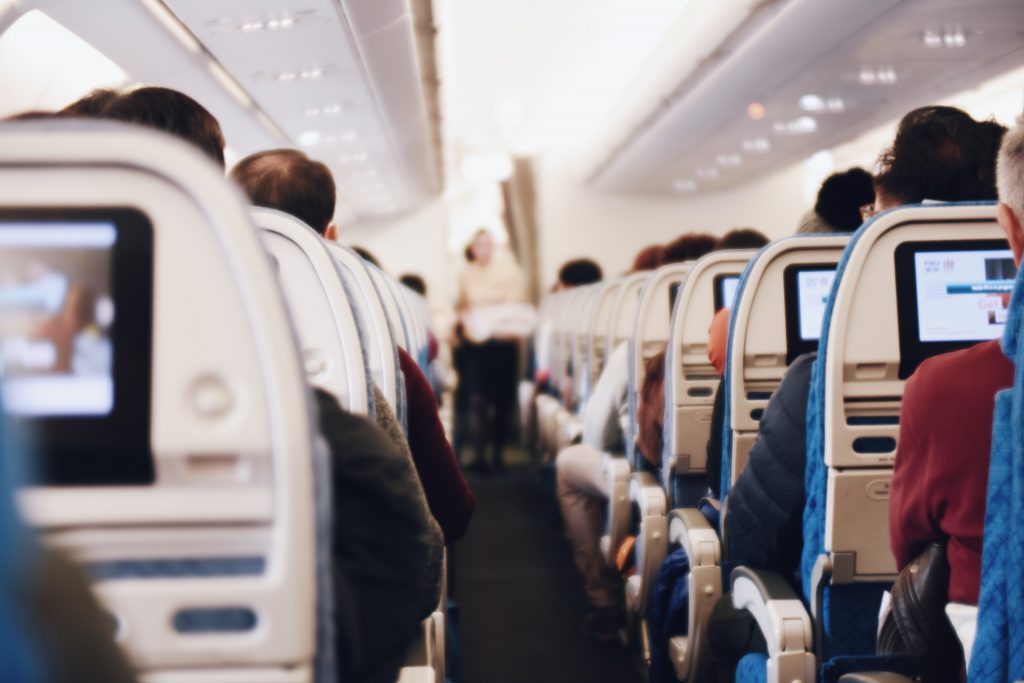I have just traveled from my home in Latvia to the Philippines. I’ve spent 3 hours flying from Riga to Istanbul, Turkey, and 12,5 hours from Istanbul to Manila. I’m writing this post being 9000 km away from home. Plenty of time and considerable distance to reflect on my travel habits and make a list of my own suggestions on how to travel more sustainably for our planet.

Let’s start with understanding what is sustainable tourism. Generally, it means finding a way to travel any distance around the world without harming natural and cultural environments in long term. Sustainable travel should minimize the negative impacts of tourism and become beneficial to the area in a perfect world.
For me, sustainable travel should be the only way we travel. Excessive air travel causes harmful CO2 emissions, package holiday resorts are built on natural areas and harm landscapes. Unfortunately, International travel and tourism are far from being sustainable, but I believe that with education and experience people become more aware of the issue and everyone can make small steps to decrease their impact on the planet. Even traveling from China to see the Eiffel Tower or traveling from Latvia to see the Grand Canyon in the USA, can become less impactful.
The World Tourism Organization defines sustainable tourism as “development which meets the need of present tourists and host regions while protecting and enhancing opportunity for the future. It is envisaged as leading to management of all resources in such a way that economic, social, and aesthetic needs can be fulfilled while maintaining cultural integrity, essential ecological processes, biological diversity, and life support system.”
Travelers need to be more aware of pollution levels caused by travel and how that affects the environment and local wildlife. They also need to be aware of how tourism affects local people, businesses, and native cultures.
You may encounter such definitions as sustainable or responsible travel, eco or green tourism. All these terms are bringing us back to the idea of a more conscious traveling approach.
Let’s observe how sustainable travel aligns with three principles of sustainability concept.
The Environmental Pillar – focuses on reducing the negative impact on the environment and wildlife, including minimizing carbon footprint, of course, especially from air travel. Also, minimizing the use of water, packaging, and plastic waste, protecting and not disturbing wildlife. It is easy to bring your own reusables to any trip. Check hotels and places to eat which recycle and use more sustainable materials. Check your tour operators and research touristic spots you’re about to visit for their sustainability policies.
The Social Pillar – is about tourism’s impact on local communities and people. It includes supporting local businesses which employ, support, and are run by local people. Also, it includes supporting local community tourism projects, NGOs, social enterprises, and charities. Conscious travelers may be interested in being involved in such projects and researching whether local businesses they choose to cooperate with are fairly paid and provide a safe work environment.
The Economic Pillar – refers to researching if our travel money is spent to positively contribute to the local economy. Travelers may prefer ‘voting with money’ for locally-run hotels, restaurants, and tour guides or operators to support the local economy.
It was predicted that 40% of the world’s carbon emissions will be generated by the tourism industry by 2050. Approximately 72% of tourism’s CO2 emissions come from all ways of transportation, 24% from accommodation facilities, and roughly 4% from tourism activities. The modern problem is that while our environmental consciousness dictates us we should limit how often and how far we fly, we rarely listen to it. People fly far more often than is necessary just because we can – we have enough time, the money, and the desire to travel abroad.
Not only air travel is making an impact on our planet, but our chosen destination also leaves an impact as well. Some countries do not have proper regulations in place e to cope with increased tourism, foreign investors are overusing these spots leaving waste, carbon, and water chaos.
So how could we become mindful about our travels and our impact after arriving at a destination?
As travelers, we must take responsibility for advocating sustainable travel and tourism. That does not always include a straightforward solution and the ability to make changes overnight. However, nothing is impossible here.
- Choose the most sustainable way of transportation to get to your destination. Depending on your end goal, you can fly, drive, use a train or a coach. Maybe going together as a group it would be wise to share a car drive while going on your own is greener by plane or by train. Train or bus usually is more sustainable than choosing a flight, but it depends on the route.
- Consider direct flight where possible. Take-offs and landings emit the most CO2, therefore, we should look for the shortest flight path. It is better to take direct flights and avoid stopovers. Choose an economy class. Flying in business or first class includes having more space per passenger. Despite the comfortable feeling, you’ll most probably contribute up to a 5x bigger carbon footprint. Meanwhile, the economic class will save your budget and will benefit the environment.
- Use the most sustainable way of transport at your destination. Explore on foot or bike, where possible. These are the healthiest and the greenest transport options. Use public transport, minibusses, car-sharing instead of renting a private car.
- Explore slowly. Fly less often and move around not so quickly. When you have reached your destination, stay there longer to mitigate a negative impact on the environment. Being a slow traveler will benefit you many times.
- Stay in locally-owned accommodation. Choosing guesthouses, B&Bs, couch surfing, and homestays will support local owners. Check hotel’s websites and learn more about the host’s profile and how the business is run there. Again, contribute with your money to the local economy, rather than to global hotel chains. Or try camping.
- Check the green certificates at your accommodation before you go. Sustainable travel includes looking for accommodation with a commitment to sustainable initiatives. Variety of them – renewable energy, energy-efficient lighting, recycling, waste management, etc. Make research if the hotel employs local staff, gets their food from local suppliers, etc. You may check if ‘eco hotels’ are not greenwashing for clients, look for Green Globe and Green Key certification for sustainable hotels.
- Avoid large resorts. It just happened that large resorts almost always have a negative impact on the environment because of their energy and water consumption and waste management. Washing your towels and changing bedsheets daily is not totally necessary but also is a source of huge CO2 emissions due to water and energy consumption.
- Avoid all-inclusive deals. This always means you pay upfront for your accommodation, food, and services and you have little choice to go elsewhere to try local food or choose a different tour guide. In an all-you-can-eat type of catering huge amount of food is wasted. Also, all-inclusive package holidays tend to be foreign-owned and tourism money doesn’t benefit the local communities and economy.
- Always check your tour operators for green certification. There are a lot of trustworthy accreditations for sustainable travel. Look for GSTC, Green Globe, Rainforest Alliance, EarthCheck, Green Tourism Business Scheme, and many more regulatory bodies. Spend some time reading reviews on third parties websites like Google, TripAdvisor, or Trustpilot, and do not hesitate to get in touch with your tour operator to provide you more info about their policies if you still have concerns.
- Avoid wildlife tourism. Getting up-close contact with wild animals can be unethical so choose carefully a responsible wildlife tourism. If you’re allowed to touch, cuddle or ride the animals it could be a bad signal as you can usually get a sense of whether animal tourism activity may be unethical based on interaction with the animals. Look for tours that won’t disturb wildlife and that ensure you are a certain distance away from any animal. This is my personal huge pain to see people riding elephants, camels, horses, taking pictures with crocodiles, and petting monkeys. Just avoid it.
- Eat in cafes owned by locals and eat local cuisine. Buy locally grown food and go to local markets. Get souvenirs for your friends made by locals.
- Bring your eco-friendly travel essentials. For me, these are a reusable water bottle, reusable shopping bag, a couple of reusable straws, and cutlery with a lunch box where I put everything I couldn’t eat at once or pack a lunch for a flight.
- Sunscreen is a must. Everywhere you go. Sunscreen is even more important in such countries as the Philippines where the UV index can go up to 11 points and higher during peak periods. And as if that’s not bad enough, bright surfaces like sand and water can reflect UV rays and increase UV exposure. Many sunscreens contain oxybenzone, which is toxic to the symbiotic algae that live within corals. You are not allowed to bring sunscreen with oxybenzone to Hawaii and some other places that care about the environment. I use vegan sun cosmetics from Madara Cosmetics that are safe for corals and are cruelty-free.

“The Earth is what we all have in common!’ Nothing inspired, fascinated, surprised, and enlightened me as much as our beautiful planet. I haven’t been everywhere yet, traveling the world will always be my biggest dream. Seeing a lot of rubbish and plastic in the most heavenly places scares me and makes me angry. The ugliness of humanity against the beauty of nature, that’s sad but also hopeful. Each of us can easily choose more sustainable life, reduce waste and stop supporting animal cruelty all around the world.
Check out is air travel can really be sustainable?
